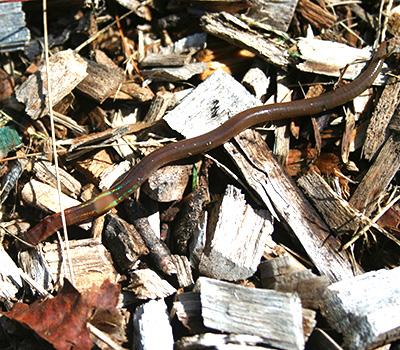Earthworm and Land-Use Legacy Effects on Belowground Carbon in the Managed Northern Forest

Northern forests have potential to store and offset a measurable fraction of anthropogenic, or human-created, carbon. A large portion of carbon storage is belowground, and prior land use has a long-lasting effect on soil carbon storage. Much of the Northern Forest with a history of past agricultural use is experiencing a net gain in soil carbon. This is threatened by exotic earthworm invaders which have caused considerable ecosystem-wide soil and vegetation changes, including forest floor and herb layer loss.
NSRC researchers surveyed 18 forested sites throughout Vermont to determine land use history and extent of earthworm invasion. Researchers examined soil aggregates (groups of soil particles that bind together) within hardwood forests, analyzed the extent that earthworm presence may influence carbon storage in these aggregates, and studied the effect of one earthworm species on an earthworm-free undisturbed forest soil. They also produced outreach materials on the earthworm situation in Vermont.
Researchers found earthworms in many Vermont forests and reported 3 new species in the state. Greater worm species diversity was related to reduced forest floor depth, higher mineral soil carbon, reduced microaggregate proportions, and higher microaggregate carbon concentrations due to passage through the earthworm gut. Sites with the highest worm density and species diversity had a history of agricultural land use (although not all former-ag sites had earthworms). Earthworm activity, in the long term, may increase the quantity and stability of sequestered carbon in the soil, but more work is needed to understand earthworm invasion patterns and how to better control populations of the most aggressive species.
